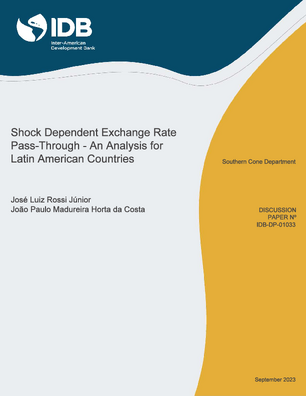Shock Dependent Exchange Rate Pass-Through - An Analysis for Latin American Countries
Date
Sep 2023
This paper investigates the exchange rate pass through considering the source of the shocks that hit the economy. With a Bayesian Global VAR model, the exchange rate pass-through is analyzed for 5 Latin American countries: Brazil, Chile, Colombia, Mexico and Peru. The model is estimated with Bayesian techniques and is identified by sign and zero restrictions. The BGVAR estimation enable us to allow spillover between countries mimicking the real conditions when the shocks hit the economies. Four domestic shocks for each Latin American countries are considered: an exchange rate shock, a risk premium shock, a monetary policy shock and a demand shock. The demand shock has the highest exchange rate pass-through for all the countries and the exchange rate shock has the lowest one. Additionally, two regional shocks are considered: a regional monetary policy shock, an event that all the region rises its interest rate and a regional risk premium shock, where the risk premium rises at the same time. For almost of the countries, the exchange rate pass-through coming from those regional shocks are lower than its domestic counterpart shock. Finally, we investigate two global shocks, an uncertainty shock and a global commodities/demand shock. The uncertainty shock decreases the economic activity and depreciates the exchange rate with a negative exchange rate pass-through in the middle term. The commodities/demand shock increases the economic activity and appreciates the exchange rate passthrough, having a negative or neutral exchange rate pass-through over the time.




